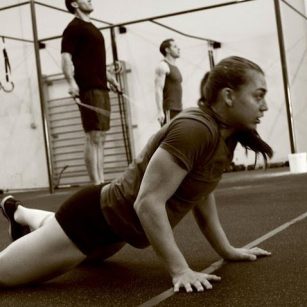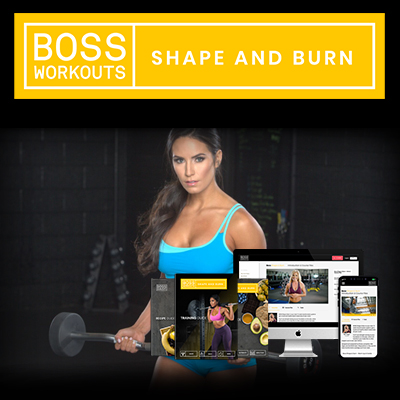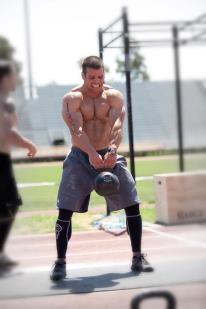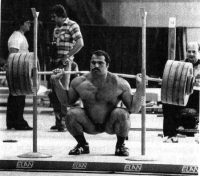Hey, Athletic builders so happy to see all of you!!!! For most of you, January is not “get into shape“ month because you have been on the grind and most likely don’t stray too far away from it.
I know that time is a big factor when it comes to working out so I have put together a metabolic workout stencil that you can play with to suit your training. This is a quick and simple way to get as much done in as little as possible.
We all know life gets in the way but no matter what we go back to barbells and plates to play.
What is Metabolic Training?
Metabolic training by definition means training at a high intensity using multi-joint training circuits that if done correctly will melt away fat & produce toned lean muscle development.
A Metabolic Workout features a total body workout that employs high-intensity work periods with short rest periods in an alternating set or circuit format that combines the muscle-building benefits of resistance training with the fat-burning benefits of interval training.
The result is a killer boot camp-style workout that will supercharge metabolism for up to 48 hours post-workout, tone and tighten your whole body, blast stubborn fat, and get you into the best shape of your life with only three 30-minute express workouts per week.
Benefits of Metabolic Training
Metabolic training is all about maximizing the calories you burn, not just during your workout, but long after you’ve left the gym. This type of training usually involves high-intensity workouts with minimal rest periods, combining strength and cardio exercises.
One big benefit is the “afterburn” effect, where your body continues to burn calories at an elevated rate post-workout, which is great for weight loss or maintenance.
Apart from calorie-burning, metabolic training can improve your cardiovascular fitness and boost your metabolism. This type of training can also build lean muscle mass, which in itself is metabolically active and helps you burn even more calories at rest.
However, it’s a strenuous form of exercise, so it’s important to make sure it’s appropriate for you, especially if you have any pre-existing health conditions.
Is Metabolic Training The Same As HIIT?
Metabolic training and HIIT (High-Intensity Interval Training) share similarities, but they aren’t exactly the same thing. Both focus on high-intensity workouts that aim to boost metabolism and calorie burn.
However, HIIT strictly involves periods of intense exercise followed by short, sometimes active, rest periods. The goal is to push your heart rate up to around 80-95% of its maximum during the intense bursts.
Metabolic training is a bit broader in concept. It often incorporates elements of strength training, cardio, and even flexibility exercises.
The aim is still to maximize calorie burn and improve metabolic rate, but the approach is usually more varied than HIIT. Metabolic training might include a range of activities from kettlebell swings to sprinting to push-ups, often with little rest in between sets, to keep the heart rate elevated.
So while all HIIT can be considered metabolic training, not all metabolic training strictly adheres to the HIIT format.
Does Metabolic Training Actually Work?
Yes, metabolic workouts do work in achieving specific goals like improving cardiovascular fitness, burning calories, and building lean muscle mass.
The high-intensity nature of these workouts coupled with minimal rest periods keeps your heart rate elevated, which is effective for calorie burning both during and after the exercise session.
This is often referred to as the “afterburn” effect, or more formally as Excess Post-Exercise Oxygen Consumption (EPOC), which means your body continues to burn calories at an elevated rate after you’ve finished your workout.
However, it’s important to note that these workouts are demanding and may not be suitable for everyone. Overdoing it could lead to injury or burnout.
As always, it’s wise to consult with healthcare providers or fitness professionals before starting a new, intense workout regimen. And remember, while metabolic workouts can be a powerful tool in your fitness arsenal, they’re most effective when combined with a balanced diet and overall healthy lifestyle.
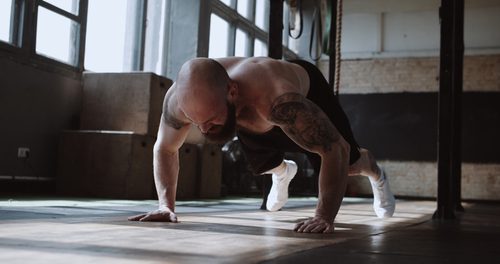
Common Metabolic Training Exercises
In metabolic training, you’ll see a blend of exercises that get your heart pounding and your muscles burning. Think of moves that hit multiple muscle groups at once and can be done at a fast pace. For starters, there’s the classic burpee, which is pretty much a full-body workout in itself. You’re squatting, jumping, and doing a push-up all in one swift motion.
Then you’ve got kettlebell swings, which target your legs, hips, and arms while getting that heart rate up. It’s like cardio and strength training had a baby. Speaking of strength, weighted squats are another staple. They build lower body muscle and, if you do them at a brisk pace, keep that calorie burn high.
Mountain climbers are a must too. They’re fantastic for core strength and can really jack up your heart rate when done quickly. Finally, let’s not forget about high knees or jump rope sessions, which focus more on cardio but also engage a lot of muscles. It’s all about mixing it up, working hard, and keeping that rest time minimal.

What Are The Key Elements Of Metabolic Training?
Three key elements of a metabolic strength workout are intensity, variety, and minimal rest periods. First, intensity is crucial; you should be working hard enough to elevate your heart rate and challenge your muscles. This often involves lifting heavier weights than you would in a traditional strength training session, or performing bodyweight exercises at a faster, more intense pace.
Second, variety is important. A well-rounded metabolic workout typically includes a mix of strength exercises that target different muscle groups, as well as cardio exercises. This variety not only keeps the workout interesting but also maximizes the metabolic benefits by engaging different muscles and systems in your body.
Third, minimal rest periods are a hallmark of metabolic strength workouts. Keeping rest times short—say, 15 to 30 seconds between sets or exercises—ensures that your heart rate stays elevated throughout the workout. This increases the calorie-burning potential and activates the afterburn effect, where you continue to burn calories post-workout.
Menace Training
What makes this program particularly challenging at the advanced level is the work-to-rest ratio, which can go up to a brutal 3:1.
In simple terms, if you’re working out for 30 seconds, a 3:1 ratio would mean you rest for just 10 seconds. To figure out any ratio, just divide the rest time by the work time.
I personally avoid exceeding a 3:1 ratio. Pushing beyond this can actually backfire, risking muscle breakdown—known as catabolism—and poor form, which increases the chance of injury.
Beginner 1:1 Intermediate Ratio 2 :1
30-second sprint 1 min sprint
30-second rest 30 seconds rest
30 seconds Burpees 1 min burpees
30 seconds rest 30 seconds rest
30 seconds hammer curls 1 min Hammer curls
30 seconds rest 30 seconds rest
Easy enough right?
1 Set is 3 min 1 set 4 min 30 seconds
1 round is 3 sets 1 round 3 sets
Repeat twice Repeat twice
For the advanced portion of this, I would suggest a treadmill or rower. If you have access to a track then go ahead and use it. Due to the fact that the ratio is 3:1 do your best to go as hard as you can for as long as you can in the work set.
Advanced 3:1
1 min 30 row/sprint
30-sec rest
1min 30 burpees
30-sec rest
1 min 30 hammer curls
For workout frequency, the recommended schedule is three days a week, with at least one rest day in between sessions. Your approach can vary depending on your personal beliefs about training. You could opt for one day on, one day off to give your arms some rest, or go for a more intense schedule of two days on, one day off. The choice is yours.
Mind right!!!!!Body Tight!!!!!

Wayne Mutata is a Certified USA Weightlifting Coach, Nike SPARQ Combine Trainer, and recognized supplement specialist with over a decade of professional experience. He holds a Master’s degree in Physiology and Anatomy, along with double minors in Dietary Nutrition and Exercise Science from the National Personal Training Institute of Philadelphia.
Wayne is a sought-after Strength and Conditioning expert, working with professional athletes including MMA fighters and elite Figure/Bikini competitors. His training methods are grounded in science and tailored for peak performance. Beyond coaching, Wayne has built a public profile as a fitness model and on-camera fitness personality, appearing on the cover of Fitness101 magazine and earning a nomination in the Men’s Health Ultimate Guy competition.
As the founder of Itrainwithwayne, he delivers custom workout programs, supplement protocols, and online training to clients across the United States and internationally. The Itrainwithwayne brand operates two training studios, the headquarters in Lancaster, PA, and a second location in Philadelphia, PA.


